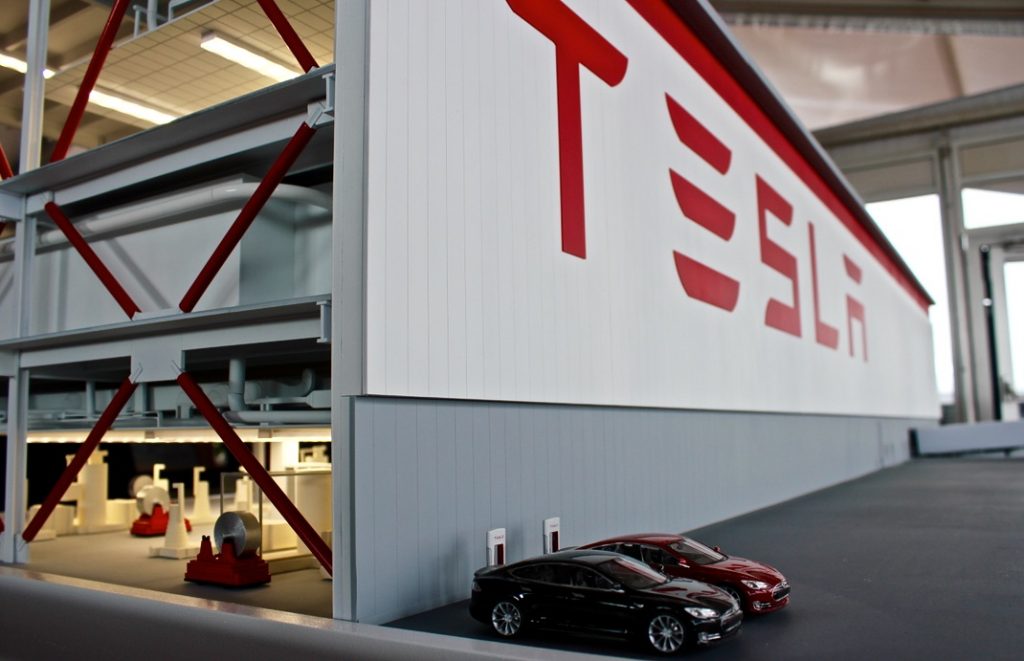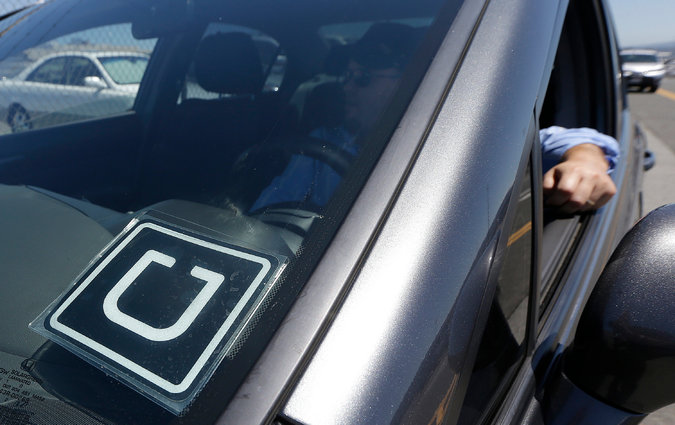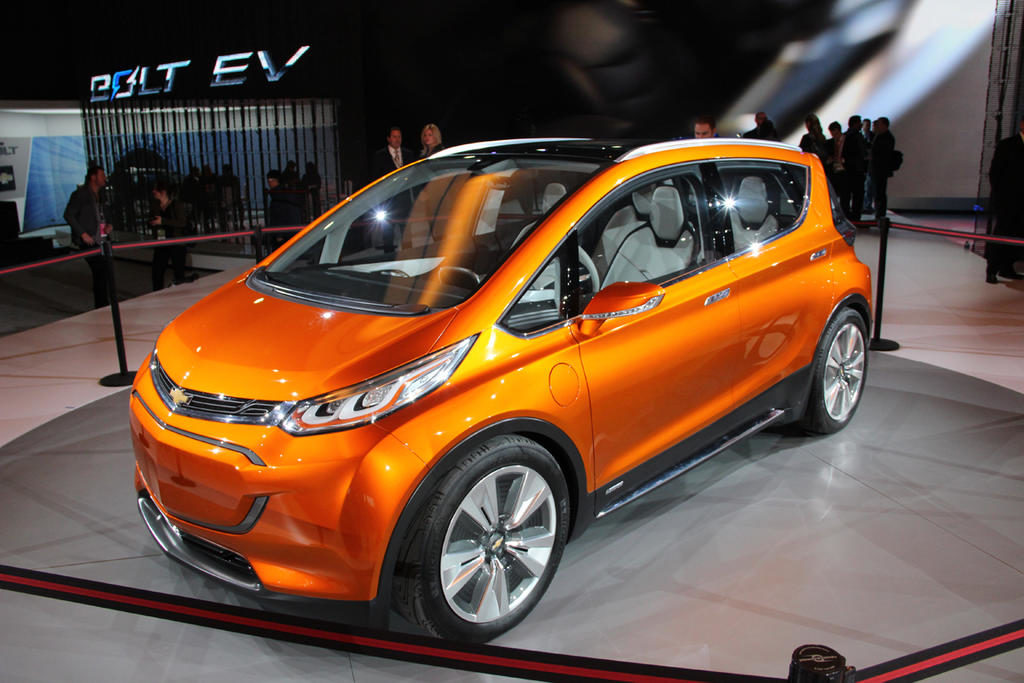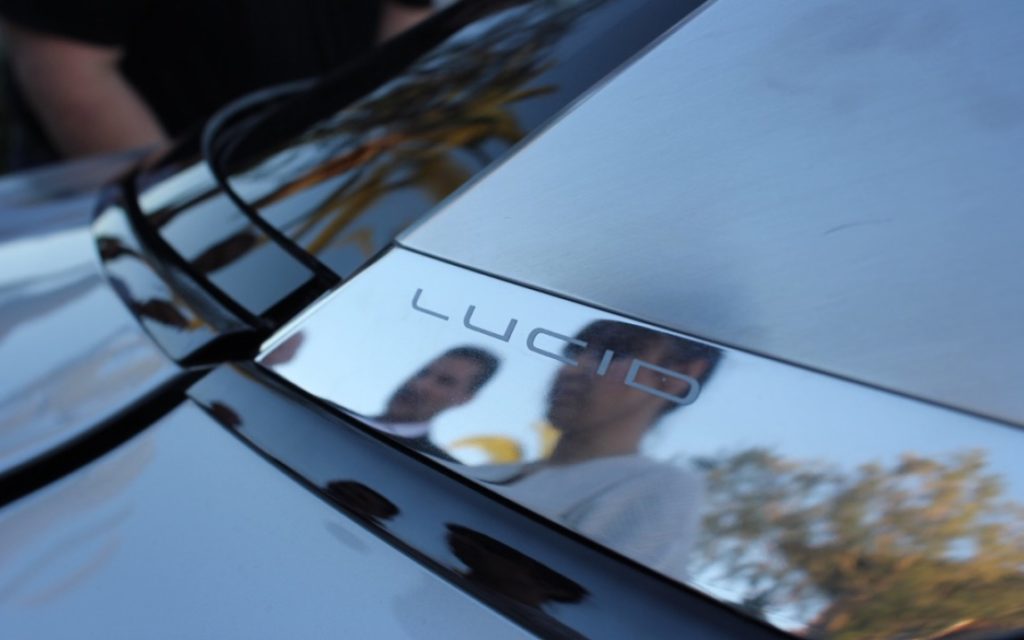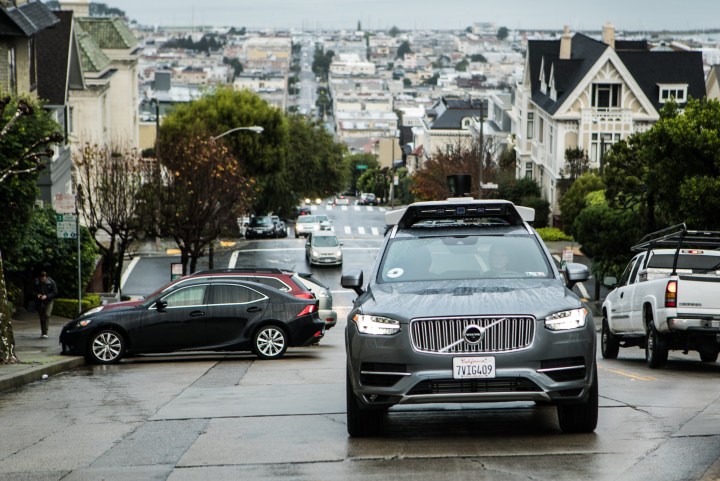News
Top 7 mobility companies of the future to watch for in 2017
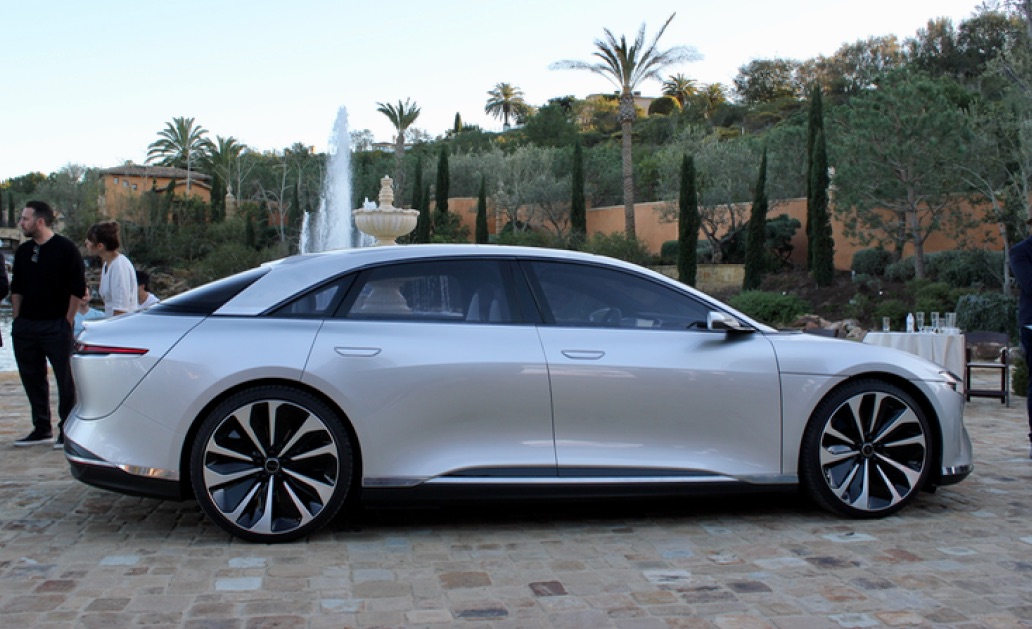
A transformation is taking shape in the auto industry led by technology-focused companies looking to upend all facets of design, powertrains, vehicle ownership, and sales and distribution, as we know it. Tesla has spearheaded this movement towards the electrification of vehicles, while priming the market for a shared vehicle ownership model to come. Joining the Silicon Valley-based electric car maker is another technology company, Uber, looking to become the transportation of the future, sans vehicle ownership.
The automotive industry has just begun its transformation into the mobility industry, and it is important to understand who is leading the pack in innovation.
#1 Tesla
The future mobility industry is being led by Tesla through their fleet of long range electric vehicles – currently having the longest range electric car in the industry – and its Autopilot driver assistance technology. Having the most advanced battery and motor technology in the world, Tesla continues to do a land grab of market share in the automotive market. With planned introduction of Model 3 this year into consumer hands, Tesla is poised for massive growth as it ventures into mass market territory. The company also has billions of miles of data collected through its fleet of vehicles and looks to grow a self-driving market powered by Tesla innovation.
What to watch for in 2017: Fully autonomous vehicles, Model 3 production, improved Supercharger technology with faster charging speeds.
#2 Uber
Uber has grown rapidly in 2016 and is now one of the most recognized startups in the world. Uber’s software algorithms help move millions of people per day and provides a source of income to thousands of workers globally. With Uber’s recent movement into self-driving technology, Uber could emerge as a complete replacement to vehicle ownership. Additionally, Uber acquired Otto in 2016 for $680M, a company that has helped Uber with their self-driving efforts while looking to bring autonomous driving technology to the trucking industry.
What to watch for in 2017: More self-driving cities, entrance into the trucking industry, expanding delivery service.
#3 General Motors
Under Mary Barra’s leadership, GM has transformed itself over the past three years to expose itself to autonomous driving, electric vehicles, and the shift in car ownership. Just this month, GM shipped the Chevy Bolt, a low-cost, long-range electric vehicle. While it is still to be seen whether the Chevy Bolt will be successful, GM has been investing in a variety other innovative areas.
GM has asserted itself as a major player in the car-sharing and ride-sharing industry. In 2016, GM launched a “personal mobility” brand, Drive Maven, which allows people to rent a car on an hourly basis. GM has launched the brand in 12 cities across North America and is investing heavily in growing the brand. GM also invested $500M into Lyft and partnered with the company to provide easier access to vehicles on the platform. In addition to their investment in Lyft, GM also acquired self-driving start-up, Cruise Automation, for $1 Billion in cash and stock. Clearly, GM has been very busy in order to stay relevant and has asserted themselves as the leader of traditional automaker industry.
What to watch for in 2017: Chevy Bolt production, expansion of Maven, more advancements with Cruise’s self-driving technology.
#4 Lucid Motors
Lucid Motors has been hard at work for over ten years to develop their first production vehicle, the Lucid Air. The company promises a large luxury vehicle with 1,000 hp and 400 miles of range. While the claims might seem lofty, Lucid is poised to become a very dominant force within the new era of electrification. They are the most likely start-up automaker to make it to production in the next few years. The company has raised over $130M and has quietly begun construction of their factory in Arizona and aiming for a production run of 10,000 vehicles in 2019. Lucid’s CTO is the former vice president of vehicle engineering at Tesla Motors and was involved in the development of the Model S.
What to watch for in 2017: Factory development, more details, and pricing on the ‘Air’
#5 NextEV (NIO)
NextEV is the newest start-up automaker to enter the EV space and has developed advanced technology to assert themselves in the market. Founded in late 2014, NextEV has raised upwards of $500M and has brought on a veteran technology executive as their CEO, Padmasree Warrior, who’s the former CTO of Cisco and Motorola. The company participates in the Formula E electric car racing series. In November 2016, the company rebranded itself as NIO.
NIO has already built and tested its electric supercar the EP9 that broke the electric vehicle lap time at the famed Nürburgring course. The company is looking to launch a consumer electric car brand focused on a different style of ownership.
What to watch for in 2017: Advancements with the EP9, more details on the consumer vehicle, development of their factory in China.
#6 Volvo
Volvo surprised the automotive industry when they emerged in 2015 with the brand-new Volvo XC90 built on advanced engineering and technology. The XC90 went on to win Motortrend’s SUV of the year and numerous awards. Not only is the XC90 a fantastic refresh of the Volvo brand, but the vehicle also has a new powertrain combined with autonomous driving technology.
Volvo formed a partnership with Uber in August of 2016 to collaborate on self-driving technology. Volvo’s partnership with Uber is a major win for the brand as it moves forward to reinvent the aging brand.
What to watch for in 2017: New generation S60/XC60, full self-driving technology, electrification of vehicle lineup.
#7 Faraday Future
Faraday Future has entered 2017 swinging straight at Tesla with the FF91. The company claims a 0-60 time of 2.39 secs on the FF91 which is nothing short of impressive. Faraday has lofty goals to become a major transportation and entertainment ecosystem through a vast fleet of electric mobility vehicles. However, amid reports of financial issues taking place within the organization, the company is quickly adjusting its stated manufacturing plans and realigning its finances. Faraday Future seems to be back on track.
What to watch for in 2017: More details and pricing on the FF91, development efforts on the factory, advancements in self-driving technology.

News
Tesla hosts Rome Mayor for first Italian FSD Supervised road demo
The event marked the first time an Italian mayor tested the advanced driver-assistance system in person in Rome’s urban streets.
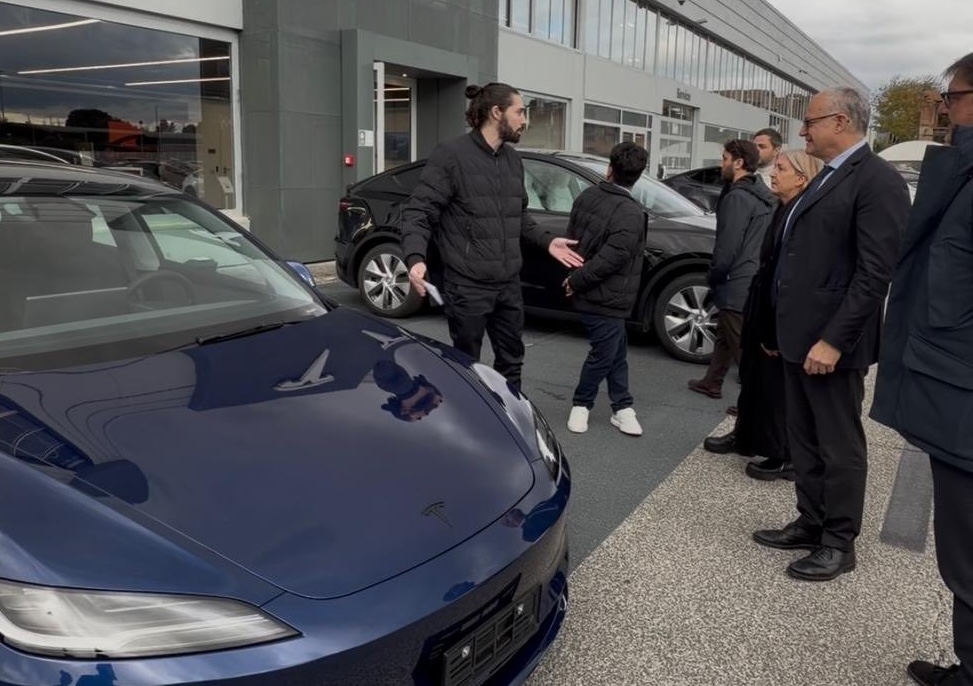
Tesla definitely seems to be actively engaging European officials on FSD’s capabilities, with the company hosting Rome Mayor Roberto Gualtieri and Mobility Assessor Eugenio Patanè for a hands-on road demonstration.
The event marked the first time an Italian mayor tested the advanced driver-assistance system in person in Rome’s urban streets. This comes amid Tesla’s push for FSD’s EU regulatory approvals in the coming year.
Rome officials experience FSD Supervised
Tesla conducted the demo using a Model 3 equipped with Full Self-Driving (Supervised), tackling typical Roman traffic including complex intersections, roundabouts, pedestrian crossings and mixed users like cars, bikes and scooters.
The system showcased AI-based assisted driving, prioritizing safety while maintaining flow. FSD also handled overtakes and lane decisions, though with constant driver supervision.
Investor Andrea Stroppa detailed the event on X, noting the system’s potential to reduce severe collision risks by up to seven times compared to traditional driving, based on Tesla’s data from billions of global fleet miles. The session highlighted FSD’s role as an assistance tool in its Supervised form, not a replacement, with the driver fully responsible at all times.
Path to European rollout
Tesla has logged over 1 million kilometers of testing across 17 European countries, including Italy, to refine FSD for local conditions. The fact that Rome officials personally tested FSD Supervised bodes well for the program’s approval, as it suggests that key individuals are closely watching Tesla’s efforts and innovations.
Assessor Patanè also highlighted the administration’s interest in technologies that boost road safety and urban travel quality, viewing them as aids for both private and public transport while respecting rules.
Replies on X urged involving Italy’s Transport Ministry to speed approvals, with one user noting, “Great idea to involve the mayor! It would be necessary to involve components of the Ministry of Transport and the government as soon as possible: it’s they who can accelerate the approval of FSD in Italy.”
News
Tesla FSD (Supervised) blows away French journalist after test ride
Cadot described FSD as “mind-blowing,” both for the safety of the vehicle’s driving and the “humanity” of its driving behaviors.
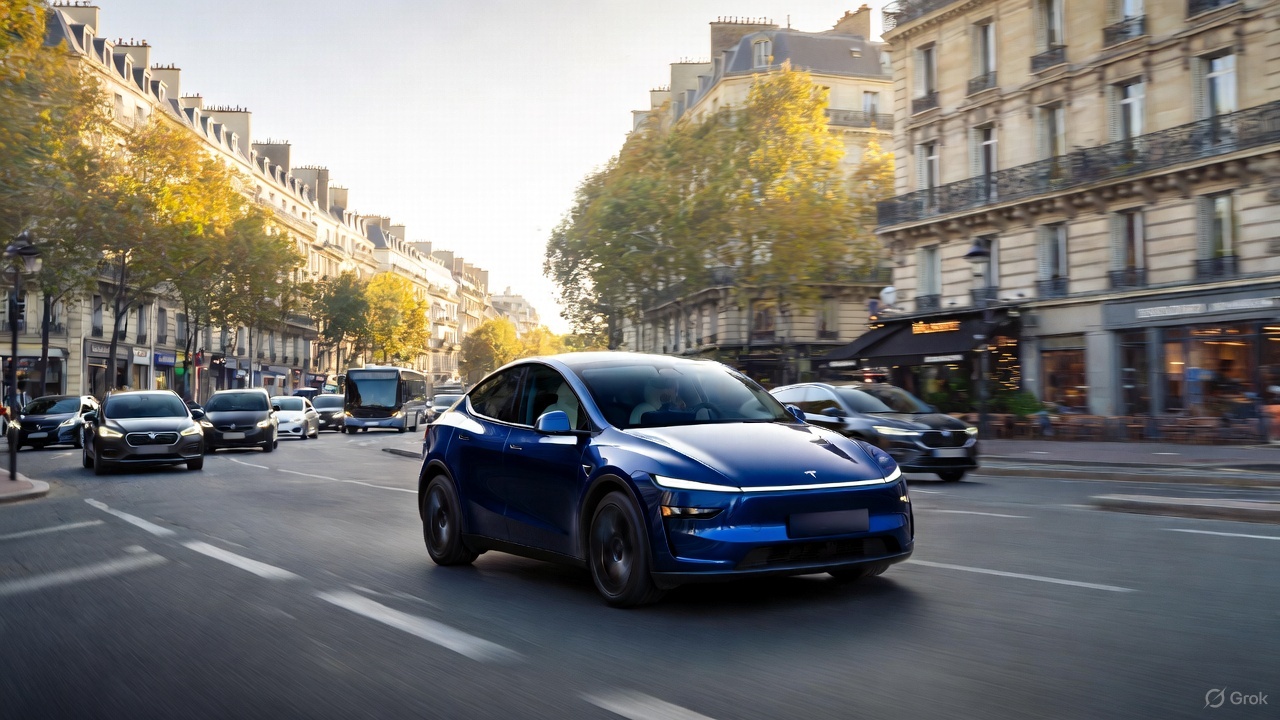
Tesla’s Full Self-Driving (Supervised) seems to be making waves in Europe, with French tech journalist Julien Cadot recently sharing a positive first-hand experience from a supervised test drive in France.
Cadot, who tested the system for Numerama after eight years of anticipation since early Autopilot trials, described FSD as “mind-blowing,” both for the safety of the vehicle’s driving and the “humanity” of its driving behaviors.
Julien Cadot’s FSD test in France
Cadot announced his upcoming test on X, writing in French: “I’m going to test Tesla’s FSD for Numerama in France. 8 years I’ve been waiting to relive the sensations of our very first contact with the unbridled Autopilot of the 2016s.” He followed up shortly after with an initial reaction, writing: “I don’t want to spoil too much because as media we were allowed to film everything and I have a huge video coming… But: it’s mind-blowing! Both for safety and for the ‘humanity’ of the choices.”
His later posts detailed FSD’s specific maneuvers that he found particularly compelling. These include the vehicle safely overtaking a delivery truck by inches, something Cadot said he personally would avoid to protect his rims, but FSD handled flawlessly. He also praised FSD’s cyclist overtakes, as the system always maintained the required 1.5-meter distance by encroaching on the opposite lane when clear. Ultimately, Cadot noted FSD’s decision-making prioritized safety and advancement, which is pretty remarkable.
FSD’s ‘human’ edge over Autopilot
When asked if FSD felt light-years ahead of standard Autopilot, Cadot replied: “It’s incomparable, it’s not the same language.” He elaborated on scenarios like bypassing a parked delivery truck across a solid white line, where FSD assessed safety and proceeded just as a human driver might, rather than halting indefinitely. This “humanity” impressed Cadot the most, as it allowed FSD to fluidly navigate real-world chaos like urban Paris traffic.
Tesla is currently hard at work pushing for the rollout of FSD to several European countries. Recent reports have revealed that Tesla has received approval to operate 19 FSD test vehicles on Spain’s roads, though this number could increase as the program develops. As per the Dirección General de Tráfico (DGT), Tesla would be able to operate its FSD fleet on any national route across Spain. Recent job openings also hint at Tesla starting FSD tests in Austria. Apart from this, the company is also holding FSD demonstrations in Germany, France, and Italy.
Elon Musk
Tesla Optimus shows off its newest capability as progress accelerates

Tesla Optimus showed off its newest capability as progress on the project continues to accelerate toward an ultimate goal of mass production in the coming years.
Tesla is still developing Optimus and preparing for the first stages of mass production, where units would be sold and shipped to customers. CEO Elon Musk has always marketed the humanoid robot as the biggest product in history, even outside of Tesla, but of all time.
He believes it will eliminate the need to manually perform monotonous tasks, like cleaning, mowing the lawn, and folding laundry.
However, lately, Musk has revealed even bigger plans for Optimus, including the ability to relieve humans of work entirely within the next 20 years.
JUST IN: Elon Musk says working will be ‘optional’ in less than 20 years because of AI and robotics. pic.twitter.com/l3S5kl5HBB
— Watcher.Guru (@WatcherGuru) November 30, 2025
Development at Tesla’s Artificial Intelligence and Robotics teams has progressed, and a new video was shown of the robot taking a light jog with what appeared to be some pretty natural form:
Just set a new PR in the lab pic.twitter.com/8kJ2om7uV7
— Tesla Optimus (@Tesla_Optimus) December 2, 2025
Optimus has also made several public appearances lately, including one at the Neural Information Processing Systems, or NeurIPS Conference. Some spectators shared videos of Optimus’s charging rig, as well as its movements and capabilities, most interestingly, the hand:
You have to hand it to Elon 🤟 pic.twitter.com/fZKDlmGAbe
— Ric Burton · NeurIPS 2025 (@_ricburton) December 2, 2025
The hand, forearm, and fingers have been one of the most evident challenges for Tesla in recent times, especially as it continues to work on its 3rd Generation iteration of Optimus.
Musk said during the Q3 Earnings Call:
“I don’t want to downplay the difficulty, but it’s an incredibly difficult thing, especially to create a hand that is as dexterous and capable as the human hand, which is incredible. The human hand is an incredible thing. The more you study the human hand, the more incredible you realize it is, and why you need four fingers and a thumb, why the fingers have certain degrees of freedom, why the various muscles are of different strengths, and fingers are of different lengths. It turns out that those are all there for a reason.”
The interesting part of the Optimus program so far is the fact that Tesla has made a lot of progress with other portions of the project, like movement, for example, which appears to have come a long way.
However, without a functional hand and fingers, Optimus could be rendered relatively useless, so it is evident that it has to figure this crucial part out first.
